| Columns Retired Columns & Blogs |
Great as always review- HR.
The Pass Labs & First Watt integrated amps are on my short list to demo. Several choices in each brand- which one shall I start auditioning?
I performed a full set of measurements on the Pass Laboratories INT-60 using my Audio Precision SYS2722 system (see the January 2008 "As We See It"). I preconditioned the amplifier by running it with both channels driven at one-third power into 8 ohms for 60 minutes. This is, thermally, the worst situation for an amplifier with a class-B or -AB output stage, as one-third power is when the output transistors dissipate the most heat. At the end of the hour, the highest temperature on the side-mounted heatsinks was 114.7°F (45.9°C), and that on the top panel, which was highest toward the rear, was 107.1°F (41.8°C). The THD+noise measured a constant 0.084% throughout this hour.
The volume control operated in accurate 1dB steps, and the voltage gain into 8 ohms with the volume control set to its maximum measured 28.6dB for both balanced and unbalanced input signals. Both inputs preserved absolute polarity (ie, were non-inverting). The input impedance was usefully high, measuring 90k ohms balanced and 75k ohms unbalanced at low and middle frequencies. The impedance dropped slightly at the top of the audioband, to 80k ohms balanced and 34k ohms unbalanced, but these are still high in absolute terms.
Overall, the INT-60's measured performance suggested that its circuit uses a modest amount of negative feedback, so I wasn't surprised to find that its output impedance was relatively high for a solid-state design: 0.16 ohm at 20Hz and 1kHz, rising to 0.35 ohm at 20kHz (both figures include 10' of speaker cable). Nevertheless, the modulation of the amplifier's frequency response into our standard simulated loudspeaker was fairly low, at ±0.18dB (fig.1, gray trace). Pass Labs specifies the INT-60's frequency response as being down by 6dB at 80kHz. Fig.1 confirms that figure, there being a reduction in output of just 0.25dB at 20kHz. The shape of a 10kHz squarewave into 8 ohms (fig.2) had slightly slowed risetimes, but with commendable absences of overshoot and ringing. Figs. 1 and 2 were taken with the volume control set to its maximum of "63"; there was no difference in the performance with the control set to "40," and the excellent channel matching seen in fig.1 was maintained at the lower setting.
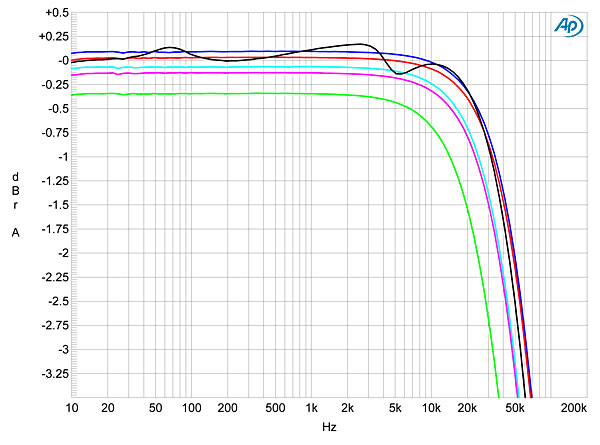

Channel separation at 1kHz was excellent, at 96dB R–L and 104dB L–R, and at 20kHz was still, respectively, 80 and 87dB. The unweighted, wideband signal/noise ratio (ref. 2.83V into 8 ohms, 1W), taken with the input shorted to ground but the volume control set to "63," was 76.5dB. This increased to 84dB with an A-weighting filter; spectral analysis of the low-frequency noise floor while the INT-60 drove a 1kHz tone at 1W into 8 ohms revealed the presence of some low-level, supply-related spuriae (fig.3). These were not affected when I experimented with the ground connection between the INT-60 and the Audio Precision test system. Those spuriae at 60Hz and its odd harmonics, which will be due to magnetic interference from the power transformer, are higher in the right channel (red trace), perhaps because that channel's circuits are closer to the transformer—but none of the spuriae are anywhere close to high enough to approach audibility.
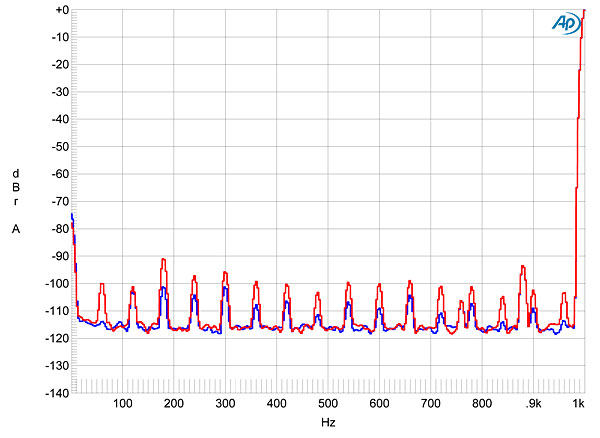
The INT-60 is specified as delivering 60Wpc into 8 ohms (17.8dBW) at 1% THD+N; as shown in fig.4, our sample clipped at 79Wpc with both channels driven into that load (19dBW). The distortion begins to rise out of the noise at around 2W, and the gentle rise in THD+N above that power suggests that only a modest degree of negative feedback is used. Into 4 ohms (fig.5), the amplifier clipped at 125W (18dBW), a slightly higher power than the specified 120Wpc, while with one channel driven into 2 ohms (fig.6), the INT-60 clipped at 200W (17dBW).

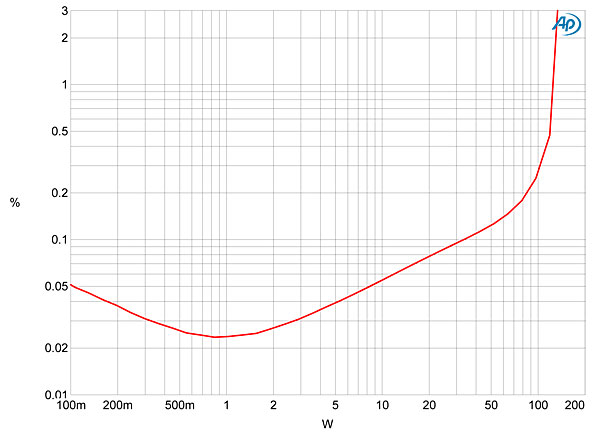
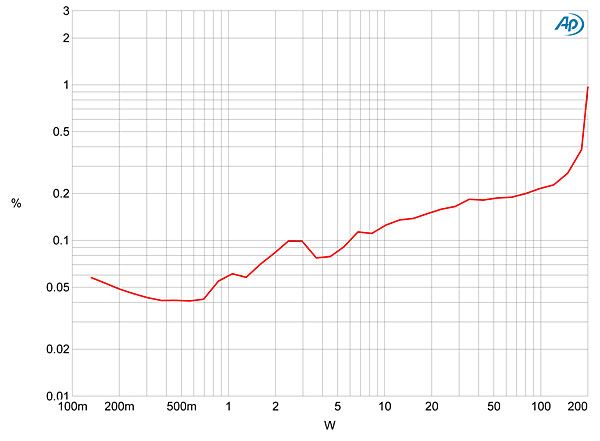
The Pass Labs was less comfortable driving 2 ohms than it was with higher impedances, as shown by fig.7, which plots the percentage of THD+N against frequency into 8, 4, and 2 ohms at a fairly high level, 12.65V, equivalent to 20W into 8 ohms, 40W into 4 ohms, and 80W into 2 ohms. Note that with the limited amount of negative feedback used, the distortion rises in the upper octaves—although, as high-level content above 10kHz is very rare in music, this decreasing linearity shouldn't affect sound quality.
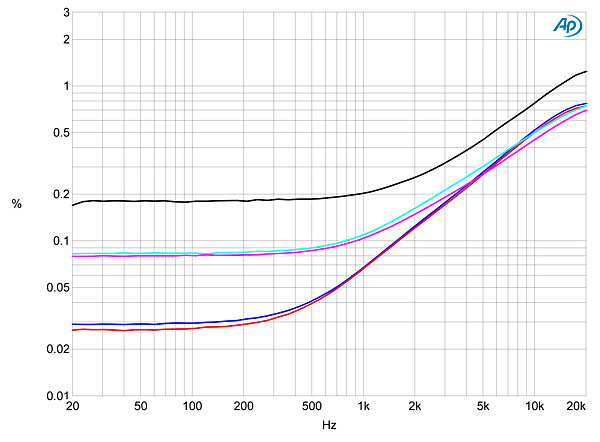
At low frequencies, the predominant distortion harmonic is the subjectively benign second (fig.8), though at 1kHz, the third harmonic rises higher in level than the second (figs. 9 and 10). Despite the increase in its harmonic distortion in the top octave, the INT-60 did relatively well on the punishing high-frequency intermodulation test, even at a fairly high power into 4 ohms (fig.11). The second-order or difference component resulting from an equal mix of 19 and 20kHz tones lies at a respectably low –67dB (0.04%), though the higher-order components at 19 and 21kHz are a little higher in level, at –60dB (0.1%).
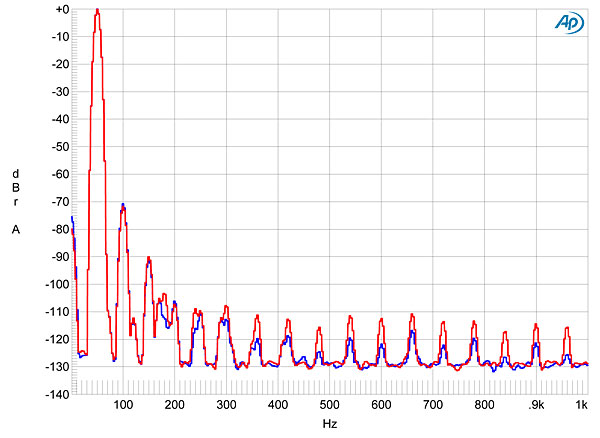
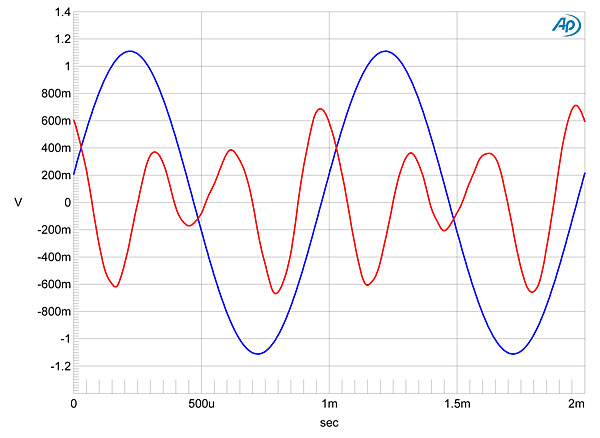
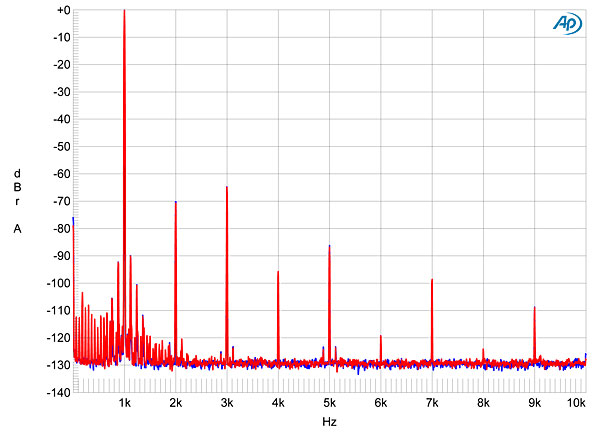
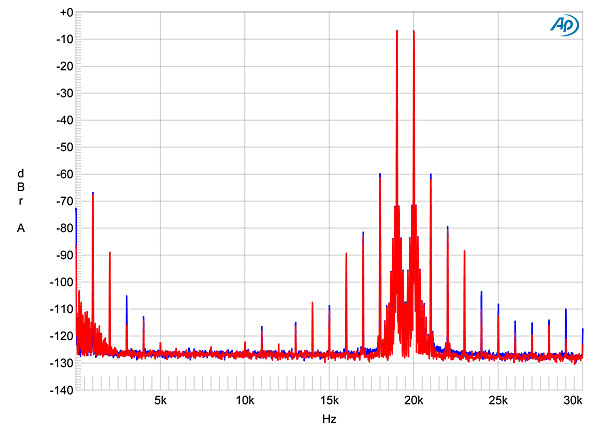
As I have come to expect from Pass Laboratories, the INT-60 offered respectable measured performance that included a careful balance of the consequences of the limited amount of negative feedback used. I'm a little suspicious of the change from predominantly second- to third-order harmonic distortion as the frequency rises, as I feel that amplifiers that maintain a constant distortion signature sound better. However, it's as fair to concede that I have no actual evidence that that is true in this case as it is to note that Herb Reichert loved the INT-60's sound.—John Atkinson

Great as always review- HR.
The Pass Labs & First Watt integrated amps are on my short list to demo. Several choices in each brand- which one shall I start auditioning?

bet they could sell this amp 30-40% cheaper if they didn't used an over-the-top chassis

There's a whiff of a self-serving argument in the 6th paragraph of this article. I am sure that this integrated is a fine piece of equipment. But to dismiss "measurements" is one many postures of the audio community that needs to be challenged.
"Measurements" don't matter; only some ethereal out-of-body experience does. Well, then why not join the ranks of most audio publications and stop going through the sweat of "measurements" altogether?
Based on my research only Stereophile, Soundstage! (Canada), and audio.com.pl (Poland) bother to do comprehensive measurements on a regular basis. Credibility is gained in my book by the efforts made to subject equipment to the objectivity of measurements. Soundstage! proudly enters disclaimers of how their methodology complies with those of the Canadian Bureau of Standards.
And, yes, measurements do matter, particularly for those of us on a budget. Measurements show where there is superior workmanship done on a budget.
I recall reading in a leading car magazine about 18 years ago that my sporty, econobox Japanese sedan had "measurements" that were quite similar to a German import costing over 2 times as much. But perhaps I missed the sublimities of the leather seating and all of the prestige. Forget that the car was not much faster, not much more powerful, and had about the same dBs (bad ones for automotive pursuits) of sound inside the driver's cabin.
I have also found that my favorite brand of timepieces (available for a reasonable price today at a mall near you) has a 5 year warranty. To my surprise, much of the finery of Geneva and Le Chaux de Fonds, costing 10 times as much, or more, often comes with a much shorter warranty.
Instead of asking why "measurements don't matter," I'd ask another question. Why does a product costing $9,000 not have better measurements, in some areas, than a $999.00 Class C integrated amp listed on the current line-up of "Recommended Components" in this publication?
I for one am delighted that I have the "better measurements," and a good audio experience to boot, off of an integrated amp (the predecessor of your Class C item) which I purchased as dealer demo for 8.7% of the price of the item under discussion in this article. I hope this fine piece of gear in this article is 11 times better than what I found on a Saturday afternoon.
Oh, and my car: it lasted 17 years; probably it out-lasted its luxury rival, and spent less time in the shop. My watch is still going strong after 15 years.
This publication, and the audio hobby in general, can't afford to dismiss the value-for-the-money trade-offs that exist in this pursuit, most your readers do it every day; we look at the "measurements," too.

Read the paragraph again:
And what about measurements? Can John Atkinson's graphs of impressive sinewaves and squarewaves corroborate relative value? Maybe . . . but, as my friend Steve Guttenberg always says, "Measurements are useless at predicting user preferences."
jason

"Measurements are useless at predicting user preferences."
??? I find measurements quite useful at predicting MY preferences--and I'm a user, aren't I? I have learned, through correlating measurements with listening, to avoid like the plague any speaker that shows signs of upper-midrange or presence-region forwardness, or that has certain other anomalies that I hate. Likewise there are certain features I look for in amp measurements.

which measurements you are referring to that are inferior to the $999 model? From what I see, the measurements of this amp are quite excellent overall. Certainly nothing to disqualify it from sounding absolutely superb. All engineers engage in trade-offs. You can run tons of loop feedback in an amplifier and get lower distortion specs, but often at the expense of sound quality . That's not the way Pass designs their amps.

I recently displaced an Ayre AX5Twenty in my main system with the PASS INT-250. If one can afford the step up from the INT-60, I strongly recommend it. The added bonus is not only are the sonics superior, but so is the interaction with the manufacturer. Kent English at PASS couldn't be more invested in ensuring a new customer's delight with a PASS product. Apparently, Charlie H has schooled the Ayre staff to make it clear that customers were clearly misguided to call Boulder and that their concerns would be best directed to their respective dealer.

My understanding is they are different. Both are "point 8" but the 60 runs a higher bias and is class A up until 30 watts. The 250 leaves class A at 16 watts.

i just purchased the new Rega Brio integrated amp. for $1000 it will give any SS amp i have heard a run for it's money. ethereal highs and profoundly musical. a heavy hitter at only 50 very powerful watts. seperate power supply for the pre-amp which simulate Class A sound. one does not have to spend crazy money for high end sound.